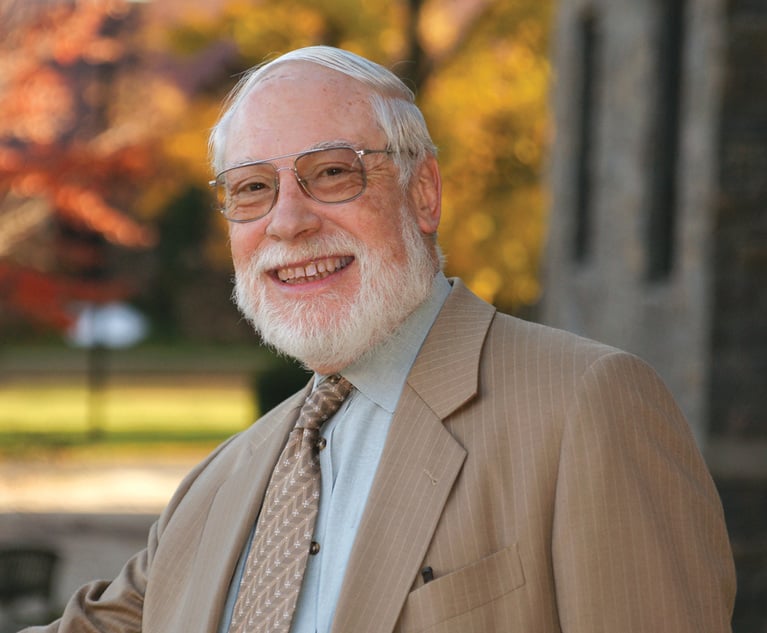Legal Issues Regarding Suicidality of Young Children in Foster Care
It is important to focus on the needs of this highly vulnerable population.
February 24, 2021 at 11:00 AM
5 minute read
 On Dec. 30, 2016, 12-year-old foster child Katelyn Nicole Davis broadcast her own hanging on a live stream social media site. Before it was taken down, the video was seen by thousands of people. In 2009, seven-year-old Gabriel Myers hanged himself in the shower of his foster home. In 2014, six-year-old Kendra Johnson died by suicide after hanging herself with a jump rope from her bunk bed. A lawsuit, filed by her grandmother, alleged that Kendra was removed from her mother's care and placed in a Minnesota foster care home where her suicidal ideations had been ignored by the child welfare system. These anecdotes demonstrate the tragic outcomes experienced by some youth in out-of-home care.
On Dec. 30, 2016, 12-year-old foster child Katelyn Nicole Davis broadcast her own hanging on a live stream social media site. Before it was taken down, the video was seen by thousands of people. In 2009, seven-year-old Gabriel Myers hanged himself in the shower of his foster home. In 2014, six-year-old Kendra Johnson died by suicide after hanging herself with a jump rope from her bunk bed. A lawsuit, filed by her grandmother, alleged that Kendra was removed from her mother's care and placed in a Minnesota foster care home where her suicidal ideations had been ignored by the child welfare system. These anecdotes demonstrate the tragic outcomes experienced by some youth in out-of-home care.
The rate of suicide among youth, ages 10 to 24, between 2000 and 2007 was approximately 6.8 deaths per 100,000 people. By 2017, the rate had increased 56%, reaching 10.6 deaths per 100,000. While suicides of children 12-years-old and younger are rare, the numbers seem to be growing. Recent figures indicate that youth in foster care die by suicide at a rate much higher than usual when compared to the general population.
When children die in child welfare settings, civil lawsuits for wrongful death, negligent supervision, or similar claims are often filed resulting in legal difficulties for the involved agencies. Legal analyses of wrongful death cases regarding suicide often involve assertions of there being a "special relationship" between the victim and the caretaker, thus imposing a duty on the caretaker an enhanced oversight responsibility. In addition, foreseeability of harm is a leading factor in determining whether a caretaker has a duty to warn others regarding potential dangers for the person in their care. These wrongful death lawsuits usually settle before proceeding to trial. Consequently, a legal ruling on liability is avoided which decreases the probability of uncovering what may have led to suicidal behavior.
This content has been archived. It is available through our partners, LexisNexis® and Bloomberg Law.
To view this content, please continue to their sites.
Not a Lexis Subscriber?
Subscribe Now
Not a Bloomberg Law Subscriber?
Subscribe Now
NOT FOR REPRINT
© 2025 ALM Global, LLC, All Rights Reserved. Request academic re-use from www.copyright.com. All other uses, submit a request to [email protected]. For more information visit Asset & Logo Licensing.
You Might Like
View All
Law Journal Column on Marital Residence Sales in Pending Divorces Puts 'Misplaced' Reliance on Two Cases
8 minute read

A Time for Action: Attorneys Must Answer MLK's Call to Defend Bar Associations and Stand for DEI Initiatives in 2025
5 minute readTrending Stories
Who Got The Work
J. Brugh Lower of Gibbons has entered an appearance for industrial equipment supplier Devco Corporation in a pending trademark infringement lawsuit. The suit, accusing the defendant of selling knock-off Graco products, was filed Dec. 18 in New Jersey District Court by Rivkin Radler on behalf of Graco Inc. and Graco Minnesota. The case, assigned to U.S. District Judge Zahid N. Quraishi, is 3:24-cv-11294, Graco Inc. et al v. Devco Corporation.
Who Got The Work
Rebecca Maller-Stein and Kent A. Yalowitz of Arnold & Porter Kaye Scholer have entered their appearances for Hanaco Venture Capital and its executives, Lior Prosor and David Frankel, in a pending securities lawsuit. The action, filed on Dec. 24 in New York Southern District Court by Zell, Aron & Co. on behalf of Goldeneye Advisors, accuses the defendants of negligently and fraudulently managing the plaintiff's $1 million investment. The case, assigned to U.S. District Judge Vernon S. Broderick, is 1:24-cv-09918, Goldeneye Advisors, LLC v. Hanaco Venture Capital, Ltd. et al.
Who Got The Work
Attorneys from A&O Shearman has stepped in as defense counsel for Toronto-Dominion Bank and other defendants in a pending securities class action. The suit, filed Dec. 11 in New York Southern District Court by Bleichmar Fonti & Auld, accuses the defendants of concealing the bank's 'pervasive' deficiencies in regards to its compliance with the Bank Secrecy Act and the quality of its anti-money laundering controls. The case, assigned to U.S. District Judge Arun Subramanian, is 1:24-cv-09445, Gonzalez v. The Toronto-Dominion Bank et al.
Who Got The Work
Crown Castle International, a Pennsylvania company providing shared communications infrastructure, has turned to Luke D. Wolf of Gordon Rees Scully Mansukhani to fend off a pending breach-of-contract lawsuit. The court action, filed Nov. 25 in Michigan Eastern District Court by Hooper Hathaway PC on behalf of The Town Residences LLC, accuses Crown Castle of failing to transfer approximately $30,000 in utility payments from T-Mobile in breach of a roof-top lease and assignment agreement. The case, assigned to U.S. District Judge Susan K. Declercq, is 2:24-cv-13131, The Town Residences LLC v. T-Mobile US, Inc. et al.
Who Got The Work
Wilfred P. Coronato and Daniel M. Schwartz of McCarter & English have stepped in as defense counsel to Electrolux Home Products Inc. in a pending product liability lawsuit. The court action, filed Nov. 26 in New York Eastern District Court by Poulos Lopiccolo PC and Nagel Rice LLP on behalf of David Stern, alleges that the defendant's refrigerators’ drawers and shelving repeatedly break and fall apart within months after purchase. The case, assigned to U.S. District Judge Joan M. Azrack, is 2:24-cv-08204, Stern v. Electrolux Home Products, Inc.
Featured Firms
Law Offices of Gary Martin Hays & Associates, P.C.
(470) 294-1674
Law Offices of Mark E. Salomone
(857) 444-6468
Smith & Hassler
(713) 739-1250







